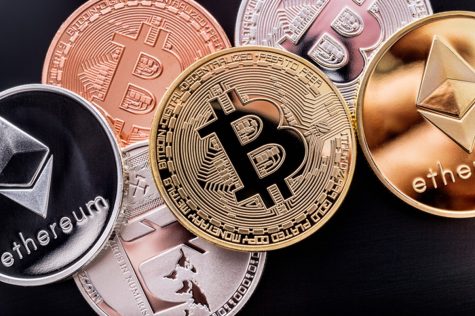Cryptocurrency Part 2 of 3: Exploring Bitcoin
This article will cover how bitcoins can operate without the government backing them, why Bitcoin has monetary value, and how its price is determined. This is part 2 of the Cryptocurrency Series. To view Part 1, which explained the technology behind cryptocurrencies, click here.
Before understanding why Bitcoin has a monetary value, this article will look at the value behind the U.S. dollar. Initially, the U.S dollar’s value was directly linked to the value of gold – until 1971 when the gold standard was abolished. Currently, the dollar is not linked to any external resource and relies solely on U.S. Federal Reserve, which determines how much money to print – primarily to manage inflation or deflation. This type of currency is called fiat money, which is currency backed only by government policy. Bitcoin differs from traditional money in aspects of being decentralized and digital.
There are six main characteristics of money that make it acceptable around the world:
- Durability
- Portability
- Divisibility
- Uniformity
- Limited supply
- Acceptability
Bitcoin satisfies all the above characteristics of acceptable money. Durability stands. As all the bitcoins are completely digital, there will be no wear and tear. Portability stands, as Bitcoin can be easily transferred to any person in the world through the Internet. Divisibility stands, as one bitcoin can be split into a hundred million satoshis. That is much higher compared to the U.S. dollar, which can only be broken down into 100 cents. Uniformity stands, as the distributed consensus property of Blockchain renders faking bitcoin impossible (unless 51% of the network gets hacked). Limited supply stands, as there can only be 21 million bitcoins in existence (18,683,031.25 bitcoins have already been mined as of this point). Acceptability stands, as bitcoin has been gradually gaining acceptance worldwide to the point where it is valid in almost every type of industry.
So, what determines bitcoin’s price? Bitcoin in itself has no intrinsic value, just as gold is just a piece of metal unless someone pays for it. The same reason anyone pays for gold – properties are sought after in all industries, from jewelry to aerospace. When it comes to bitcoin, properties such as decentralization, transparency, and security are highly sought after for business transactions. Just like any commodity (a used car, gold, a bag of oranges, et cetera), bitcoin’s price is determined by its market value.
How can bitcoin exist without government involvement? As discussed in the previous article, bitcoin uses distributed ledger technology along with a consensus-based approach to keep records secure and prevent fraudulent transactions. That eliminates the need for single entity supervision. Also, one of the driving forces behind bitcoin’s popularity is that their price or quantity cannot depend on the government as fiat money does.
Cryptocurrencies like bitcoin have many advantages that contribute to borderless trading. However, they also come with flaws. The next article will look at the disadvantages of cryptocurrencies and their future.













